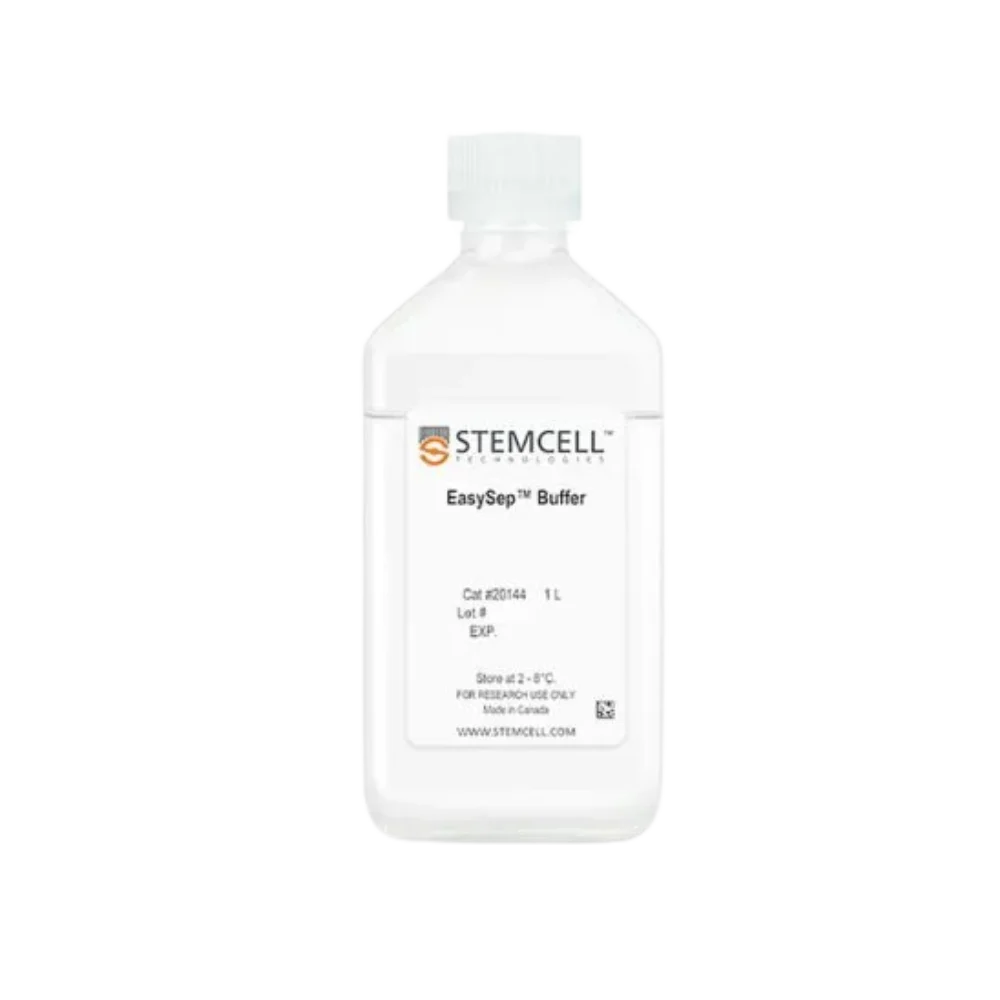The cell separation buffer is a specialized solution designed for immunomagnetic cell isolation protocols. It is the recommended buffer for manual EasySep™ separations, delivering reliable recovery of target cells. By supporting proper osmolarity and nutrient levels, it improves cell viability and ensures reproducible results. Used with EasySep™ kits from STEMCELL Technologies, this buffer streamlines workflow efficiency in any laboratory setting. Researchers in South Africa benefit from local access to trusted, high-performance reagents for critical immunology work.
Composition and Features
The EasySep™ cell separation buffer contains Dulbecco’s PBS, 2% fetal bovine serum (FBS), and 1 mM EDTA. PBS helps maintain physiological pH and osmotic balance. FBS adds stabilizing proteins that reduce nonspecific binding. EDTA binds calcium ions to minimize cell clumping. This combination protects cell integrity and enhances magnetic separation. Apex Scientific recommends using this buffer with all EasySep™ protocols to ensure optimal outcomes. South African labs can trust it to support their most demanding cell isolation needs.
Applications
This buffer supports cell isolation from human, mouse, non-human primate, and rat samples. It is ideal for immunology studies, HLA typing, and chimerism research. Immunomagnetic separation uses antibody-coated magnetic beads to tag specific cells. A magnetic field then isolates these cells with high purity and yield. The buffer’s composition minimizes clumping and helps maintain cell viability throughout the process. Many labs across South Africa rely on EasySep™ buffers to maintain consistency and accuracy in their workflows. Discover how EasySep™ immunomagnetic technology streamlines precise and efficient cell separation.
Learn More
As a leading supplier of laboratory equipment in South Africa, Apex Scientific ensures reliable availability of the cell separation buffer and related reagents. We offer expert support, training, and fast delivery to help labs operate efficiently. Visit our Insights page to learn more about cell isolation and explore techniques that enhance laboratory performance.





